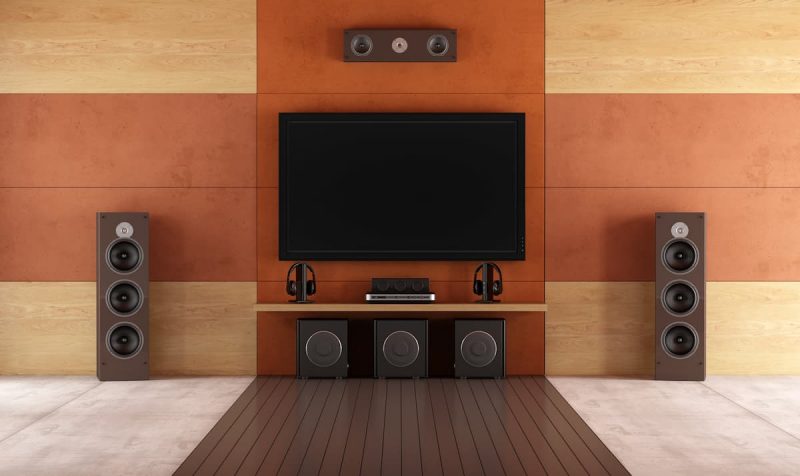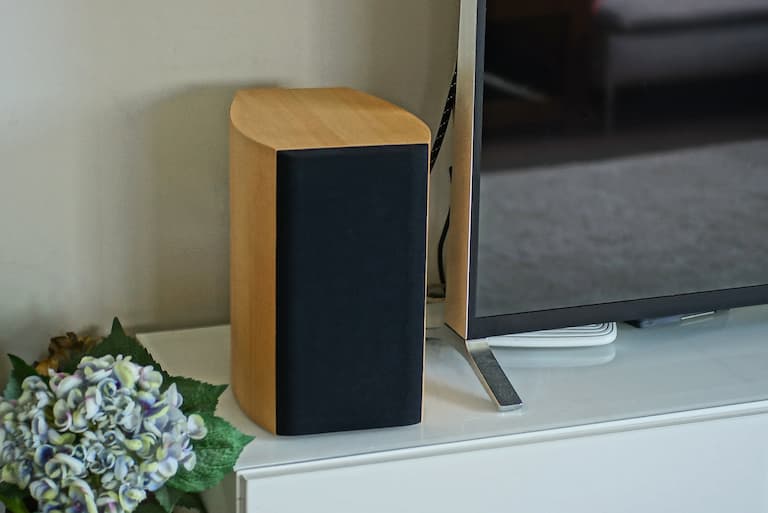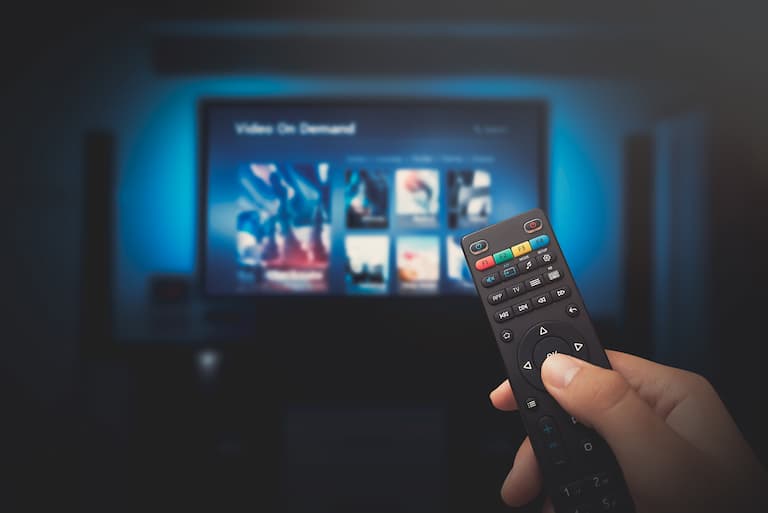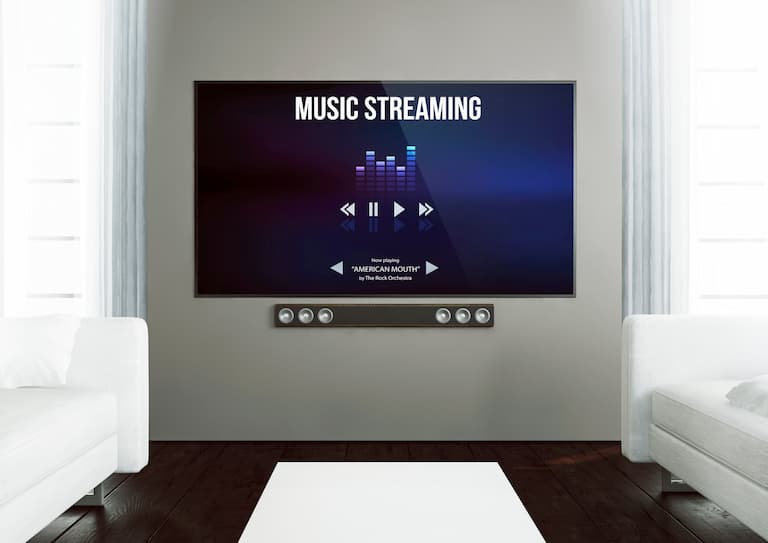Rear speakers are there to fill in the blanks when your front ones can’t deliver enough to produce a surround effect. It can be easy to overlook the importance of these speakers, especially when they’re working as intended. But a hiccup in your audio can make your audio track seem tinny, and your games sound like they’re coming from a different room.
If your rear surround speakers are not working, it’s most likely due to a bad connection, faulty wires, inaudible tracks, damaged speakers, or bad receiver settings. If the speakers are not playing audio as they should, try switching to another surround sound system or check for damaged components.
If you find that the rear speakers on your surround sound system aren’t producing the kind of output you’d expect, this article should help troubleshoot the issue. Soon, you’ll get things working again.

Why Your Rear Surround Sound Speakers Aren’t Working
So you’ve finally got yourself a set of surround sound speakers. Maybe you recently upgraded from your old stereo or just picked up some new ones. Either way, you’ll want to know why they aren’t working.
Here are a few places to start looking:
The Rear Speakers Are Turned Off
Forgetting to turn on the rear surround sound speakers happens to the best of us. It’s nothing to be ashamed of, really.
If your speaker system has more than one on/off switch, check if they’re all turned on. If they are not, switch them on and see whether normal services resume.
Your Rear Speakers are Blown
The rest of your audio system might be working properly, but your rear speakers could be damaged. Blown speakers are good at concealing the damage, which means you may have to test each speaker individually.
Your Audio System Is Sending Audio to the Wrong Speaker
Sometimes, having the rear speakers on the wrong channel will send the soundtrack to all speakers, except your rear surround speakers. Now, why would this happen to a perfectly good home theater? One reason is due to minor errors in the setup process.
Perhaps you inserted the right wires into the wrong inputs. Or maybe, you have some loose wires in the setup. Both issues can cause rear surround speakers to fail to function.
Your audio system could also send audio to the wrong speakers if you set your receiver to do so.
While some AV receivers automatically play surround sound, others have to be set manually to enable them to play the surround sound in a movie or audio file.
Therefore, if your receiver isn’t set to play surround sound, the sound won’t be heard from the rear speakers, which could make you think that the rear speakers aren’t working.

Non-Surround Sound Content
Rear surround speakers will only work when an audio file with surround sound content is played. Most songs, however, are made for two channels (the left and right channel).
When played, surround sound cannot be heard from the rear speakers. This may also make you think that your rear speakers are not working.
How To Fix Rear Surround Speakers That Are Not Working
Not all rear surround speakers are equal. Some are better than others, which means they could have a more immersive audio experience compared to other speakers.
Luckily, fixing rear surround speakers that aren’t working is an easy task. You only need the right tools and knowledge to get things back up again.
Here’s what you need to do.
1. Check Your Connections (Rear Surround Speakers and Receiver Cable Connections)
Miswired speakers are most likely not going to work as they should. The same goes for your rear surround sound speakers. Check to see if all the wires go into their respective inputs before declaring your surround sound speakers damaged.
If it helps, disconnect the power cord from the back of the TV or sound system and plug it into a different outlet. And if both outlets produce some sound, try another outlet. Then reconnect the power cord to your device, and test again to see which speaker emits sound.
If that doesn’t work, try turning off everything connected to the speaker system and do the following:
- Unplug the AV receiver/subwoofer from the power source to stay protected from electrocution.
- Push the receiver’s power pin all the way in.
- Check your RCAs (if you’re using any). Is the red jack pin inside a red input? White and yellow pins should also be in the right colored inputs, not all mixed up.
- If you’ve any banana connectors on your setup, push them all the way in. Bare high-level speaker wires should be tightly screwed into their connectors.
- Turn your home theater back on.
Your rear speakers should work fine if cabling was the issue. If the speakers still don’t work, find answers to these questions:
- Is your subwoofer connected? While it’s not always possible to see whether your speakers are plugged in, you can get a sense of whether they’re working or not. If you have a subwoofer and rear surround speakers, plug both in and ensure they’re receiving power. You should hear sound coming from both speakers when they’re on. If not, something could be wrong with the connection between the two.
- Do you have another loose cable? Check for a loose cable connecting the speaker to your TV or sound system. If you find one, reconnect it and try turning your speakers back on. If nothing changes, it’s time to inspect the wire closely.
- Is there a crack in the wire? Inspect every inch of the speaker wires. It’s not easy to find microscopic leaks. Still, if you find any cracks, it’s time for some new wires. Get some from the electronics store before moving on to troubleshooting your rear speakers themselves.

2. Clean the Audio Output Jacks on Your Device (Receiver, TV., or Speaker)
After years of battering, your speakers, receivers, and audio sources are going to collect some gunk (especially if you’re not taking good care of them). Accumulated filth contaminates the contact points at the inputs. Fortunately, you can solve this problem with a few cleaning options:
- An air blower. Small-sized air blowers blast the contacts with air. This is a simple and effective way to remove dust and tiny debris inside the receiver. If possible, open your receiver’s and speaker’s outer casing and blast the stream of air across the circuitry.
- Electrical contact cleaner. Quick-drying electrical contact cleaners are more effective at cleaning the electrical contacts. All you’ve to do is spray the liquid directly on the contacts, drain the excess, and leave whatever remains to evaporate.
Tip: For obvious reasons, don’t use water. Capacitors mounted on the circuitry might still contain some electrical charge, which might be released in the presence of water. The charge might not hurt you but it could be enough to fry the tiny components.
4. Connect a Different Set of Rear Speakers
Using a different set of rear speakers rules out the possibilities that:
- Your speaker wires are damaged
- Your receiver is damaged
- You’re not using surround sound content
One catch, though – the new set must work as it should without you changing other components. It also tells you if the speakers you are using are damaged or still functional.
Assuming the new speakers work, it means that your rear surround speakers are damaged and need to be inspected by an expert or replaced. However, if the new set of speakers doesn’t work, then it means that your speakers are okay and something else is wrong.
If you find that your rear speakers aren’t working at all, it might be because the device you’re using to listen to your audio isn’t compatible with the speakers.
Try using a different input (like a different input on your sound system or an HDMI cable) and see if that works. If it does, the problem is likely with your first input.
5. Check the Output Settings on Your TV or Sound System
Rear surround speakers will work if the AV receiver they are connected to is adjusted to surround sound mode. Before watching a movie, it’s always good to check if the receiver is set to surround sound mode and if not, ensure it is.

You can also check your TV or sound system settings on the remote control. Look for audio settings and select surround sound or the closest thing you can find. Follow these simple steps:
- Mute the TV speakers and ensure that your TV supports external speakers.
- Connect your sound system to the TV.
- Press TV on your surround sound’s remote control.
If what you’re hearing doesn’t match what you expect, change whatever setting seems to be off-kilter. Remember, though, that this will depend on your surround sound system’s manufacturer.
6. Play a Surround Soundtrack
Last but not least, the kind of content you play also determines if you get surround sound or not. Most songs have a two-channel track that rear surround speakers cannot play.
When playing a movie or audio, make sure that it has surround sound content, which the rear surround speakers can play.
However, if the soundtrack you play does not have surround sound, you can always use virtual surround sound software to try and recreate a similar effect.
Virtual surround sound converts your track from a 2-channel track to a five or seven-channel mix.
Conclusion
Your rear speakers are there to provide you with an awesome audio experience when listening to music, watching movies, or playing video games.
The good news is that you don’t always have to hire a professional to fix rear surround speaker problems. You can always do it yourself with a few tools, some basic knowledge, and an expert’s guidance if the need arises.